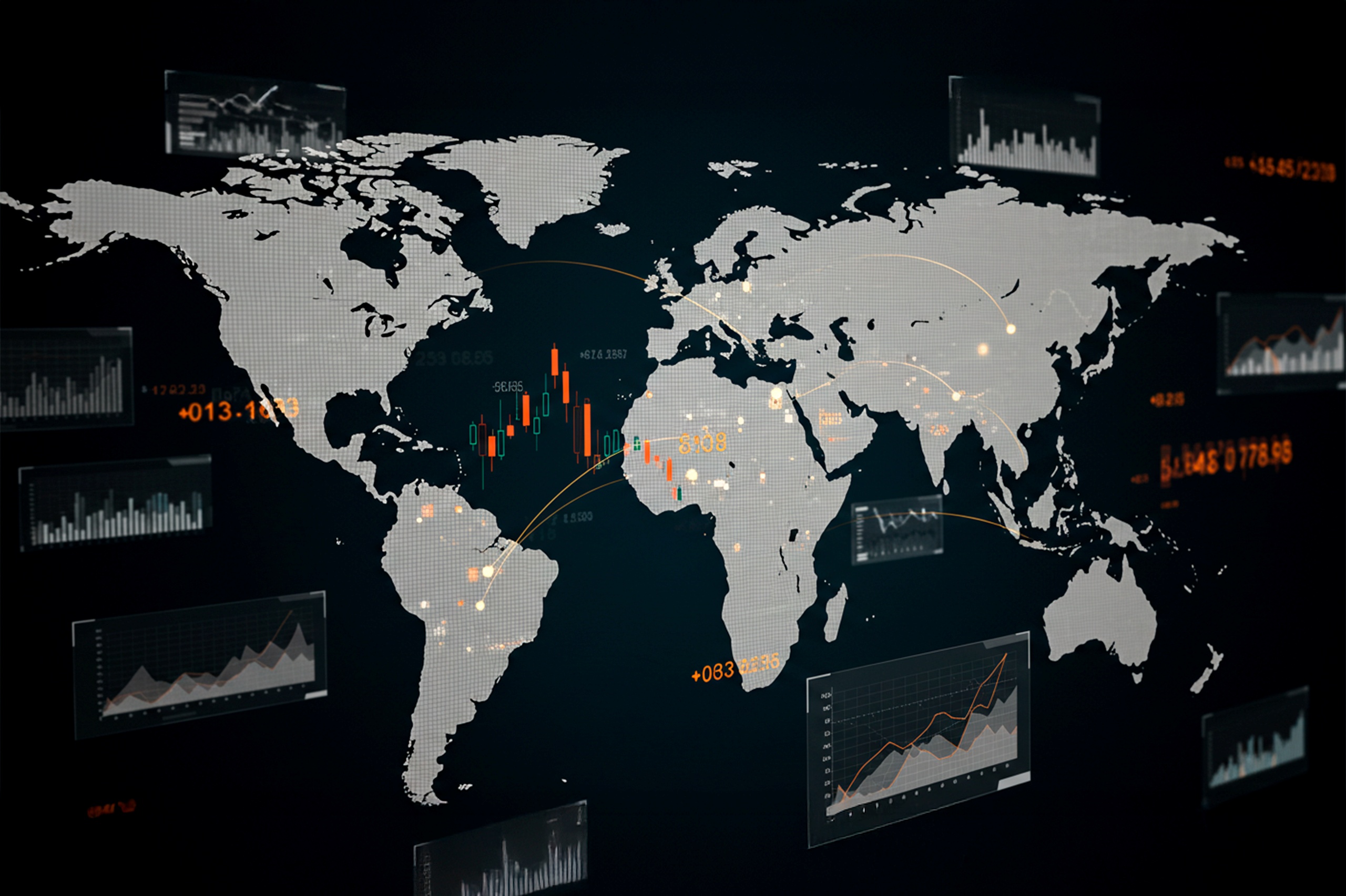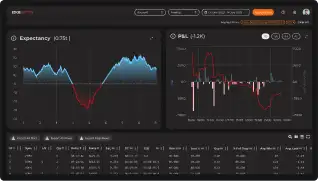
September 09,2025 @05:00 AM
Depending on current geopolitical tensions, underlying economic uncertainty, or general fear, markets can sometimes simply be volatile. But what else drives markets outside of fear, or uncertainty? When volatility is low, why does the auction and price discovery proceed?
In a previous post, Niko Pozzi discussed market volatility and approaches that traders can utilize to navigate volatile markets.
No matter what product you’re trading, there will always be news evolving around that market, sector, or specific product. Headlines can drive fast, volatile moves even in seemingly calm markets.
Let’s look at how to approach news-driven trading and, more importantly, how to stick to your trading plan when emotions are running high and the markets move fast.
The Lure of News-Driven Moves
News releases, especially high-impact ones like the U.S. Non-Farm Payrolls, CPI, Fed interest rate decisions, or unexpected geopolitical events, can cause sharp price movements across index and commodity futures. For example:
- A higher-than-expected CPI number can send the ES or NQ haywire as traders price in a potentially more aggressive Fed policy and higher inflation.
- A surprise drawdown in inventories reported by the EIA can spike CL futures.
- A Fed speaker’s offhand comment can whipsaw equity index futures in a matter of seconds.
These events can feel like golden opportunities, but they can also invite unprepared and undisciplined trading. Fast markets can exaggerate confidence and create a false sense of control. That’s why a well-defined plan and the discipline to follow it is essential.
Know the Schedule
Sounds simple, but one of the most basic and often overlooked tools is an economic calendar. This should be part of every serious trader’s morning routine.
Platforms supported by EdgeClear such as TradingView, or CQG Desktop provide market related event calendars. For futures traders, keeping a close eye on events that typically move the macro environment (such as CPI, PPI, employment reports, Fed statements) is key.
Knowing when a high impact announcement is coming up allows traders to use their trading platform’s built-in alerts to remind them 15-30 minutes before high-impact events occur. Some traders go flat ahead of big news; others use it as a setup. Either way, you want to be aware—not surprised.
Plan for the Unscheduled
Another tool traders can utilize is a real time news squawk or feed. You may know when the CPI numbers are being released, or when the next Fed Interest rate decision is, but what happens when something catches you off guard?
By obtaining a real time news service or squawk, even if unexpected events happen, you will hopefully have a head start over the traders who are stuck wondering why Crude Oil just jumped $1.50, or why the NQ sold off 100 points.
Define Your News Trading Plan
If you intend to trade around news, you must define why, how, and when you’ll enter and exit a trade.
Consider the following guidelines:
- Volatility Limits: Decide ahead of time whether you’re comfortable entering a position during peak volatility or prefer to wait until the first move settles.
- Bracket Orders: If you trade breakouts around news, placing bracket orders with predefined targets and stops can help you avoid emotionally-driven entries. Keep in mind when you are utilizing brackets, stop orders are not guaranteed and may not fill.
- Trade Size Control: Reduce position size around major releases. Trading one or two contracts rather than your full size can help you stay objective during unpredictable price swings.
- Time: Set a maximum time duration for news trades. For example, if the price doesn’t react how you anticipated, or perhaps does not move as much as you expected, know when you intend to cut the trade.
Tools for Discipline
Here are tools and techniques serious futures traders use to stay disciplined:
1. Journal Real-Time Decisions
Use a notepad or digital journal, like EdgeWatch, to log what you’re seeing and feeling as news unfolds. This keeps your mind from wandering and helps you identify emotional decision-making.
- “I want to chase this move, but it’s outside my entry zone.”
- “I hesitated on that short setup—why?”
These real-time notes become valuable learning tools for reviewing your process, not just your P&L.
2. Post-Trade Review with Screenshots
Take screenshots of your chart with your entry, stop, and exit marked. Ask yourself:
- Did I follow my plan?
- Was the setup valid?
- Did I take on too much size?
This review process builds muscle memory and reduces impulsive trading. Dive into Niko’s blog post for some more tips on improving trade discipline.
Common Pitfalls When Trading the News
Even disciplined traders fall into these traps:
- Chasing After the Move: Once the news hits and the market makes a big move, FOMO sets in. This often results in entering too late and being shaken out on the pullback.
- Ignoring Your Stop: The idea that “this move will come back” can be costly in leveraged markets. Crude Oil can move $1.00 in minutes—a 20-tick stop can be blown through in a heartbeat. Also keep in mind, stops are not guaranteed and you should always monitor your positions closely, especially in volatile news-driven markets. Learn more about harnessing stop outs in my previous blog post.
- Overtrading: Oftentimes if a particular headline generates an intense market reaction, traders feel the need to try to take advantage of the sudden volatility. I’ve found this can be especially true when the market has been quiet for an extended period (picture a market that’s been consolidating for weeks and all of the sudden is thrown into chaos). It’s important to stay focused on your framework and the broader context to avoid overtrading and attempting to catch moves that have already played out.
When Not to Trade the News
One of the most underappreciated edges in trading is knowing when to stay out. If you’ve had a losing streak, if your mental capital is low, or if you’re in the middle of strategy development—sit out.
You don’t need to catch every move, you need to stay alive and keep your edge sharp.
Closing Thoughts
Trading around news events can be profitable, but it’s rarely easy and can carry great risk as well. The speed, volatility, and noise of these moments test your execution and your mindset.
Whether you’re trading the E-mini Nasdaq during a Fed press conference, Crude Oil during an OPEC announcement, or the S&P 500 on jobs day, positive outcomes hinge less on predicting the news—and more on how well you stick to your process.
As Futures traders, we operate in a world of leverage and speed. That means planning ahead, protecting your capital, and learning from each session—especially the tough ones—are what ultimately move you toward consistency.
Disclaimer: Derivatives trading involves a substantial risk of loss and is not suitable for all investors, the views expressed are personal opinions and should not be interpreted as financial advice.
~ Ian Blanke, Executive Director

